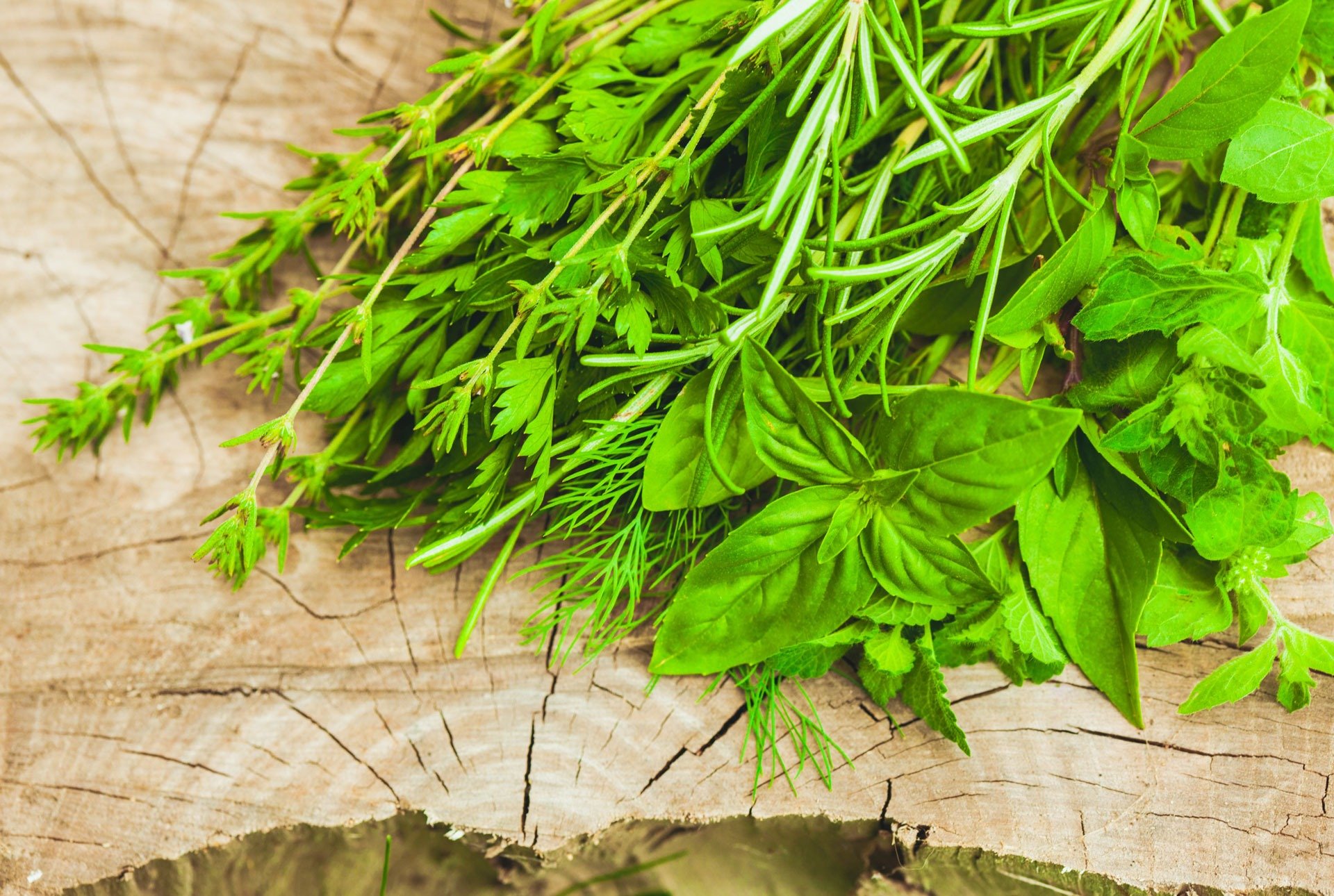Real Food Encyclopedia | Oregano and Marjoram
Though we talk about them like two distinct culinary herbs, oregano and marjoram are closely related: What we call “oregano” is Origanum vulgare, while marjoram is Origanum majorana. In fact, you may find their names used interchangeably. Both are shrubby perennials with leaves that have an earthy, sometimes bitter flavor — a distinctive taste that comes from the chemical compound carvacrol — with marjoram the milder, slightly sweeter of the two. And both are native to the Mediterranean region, making them a common sight in Italian, Greek, Turkish and Levantine cuisines.
Did you know?
- Other close relatives include dittany, or Origanum dictamnus, and the herb sometimes called “bible hyssop” — Origanum syriacum, also known as Syrian or Lebanese oregano.
- Oregano and marjoram are in the Lamiaceae family (aka mint family) alongside mint, basil, rosemary, sage, thyme, lavender, shiso and other common herbs.
- Despite the common name “Mexican oregano,” the pungent Lippia graveolens — often used in chili powder — is more closely related to lemon verbena.
What to look for when buying oregano and marjoram
When buying fresh oregano and marjoram, look for bunches that are vivid in color — both are a dusty green, but still vibrant — and not limp or. If any leaves are shriveled or darkened and mushy, it may not be the best bunch available.
Dried oregano and marjoram keep their flavor nicely and, like most dried herbs, are more potent than their fresh counterparts. When stored correctly, they can last for multiple years; you can look to see if the container has a packaging or harvest date. Dried marjoram and oregano that is labeled “single-origin” or produced locally will likely involve a shorter supply chain, and therefore may be fresher.
Sustainability of oregano and marjoram
Oregano and marjoram rank low on environmental impact compared to other monocropped plants. In fact, they are known for their hardiness in dry conditions and low water footprint — that is, if you’re not considering the water used to ship produce long distances to consumers. When possible, try to source your herbs from farmers’ markets to cut down on food miles. Oregano and marjoram are great plants to use for ground cover, which helps with erosion and retention of moisture.
Seasonality
Summer and autumn are prime oregano and marjoram time. Look for them in your local farmers’ market. Our modern food system means that herbs are shipped from California, Mexico and Latin America to grocery stores all year round, but nothing beats the freshest herbs.
Cultivation
Oregano and marjoram are perennial herbs that flourish in warm, sunny weather. Just like their cousin mint, oregano and marjoram are fairly invasive. Savvy gardeners will plant them in a pot or well-drained container with moist soil to keep the plants from spreading all over the garden.
Marjoram does better in cooler weather than oregano, but both can be grown in northern U.S. states in temperatures no lower than 50 F. Cold weather, however, will cause the herb to lose its distinctive flavor.
Eating oregano and marjoram
Storing
Keep dried oregano and marjoram in an airtight container in a cool, dark place. Fresh herbs will keep for a couple of weeks in the refrigerator once they are harvested — store wrapped in a paper towel inside a plastic container.
Cooking
Oregano is a peppy and savory addition to meat, fish, eggs, cheese, vegetables and bread. Oregano and tomato is an especially beautiful match. You can chop both herbs fresh to add to salads or use them to season homemade salad dressings. If you are cooking with fresh herbs, the flavor tends to dissipate with heat, so add to your dish near the end of cooking.
While fresh herbs are best, dried oregano is one of the few that keep well and retain flavor. Za’atar, a Middle Eastern condiment of oregano (traditionally, Origanum syriacum), dried sumac, spices and sesame seeds, is delicious — try it in Za’atar manaqish, dusted on hot flatbread with a drizzle of olive oil.
Marjoram, the more mild-mannered version of oregano, is great with grilled fish and chicken. Marjoram is also one of the many dried herbs that goes into herbes de Provence, a French staple.
Preserving
If you have more freshly harvested oregano or marjoram than you are able to use, you can dry them for later or freeze them as ready-to-use ice cubes.
Nutrition and health
Oregano and marjoram aren’t exactly vitamin rich. However, oregano essential oil has been studied for possible antibacterial properties, which have also been touted by alternative medicine circles. Marjoram essential oil has also been studied for its potential stress-relief uses.


